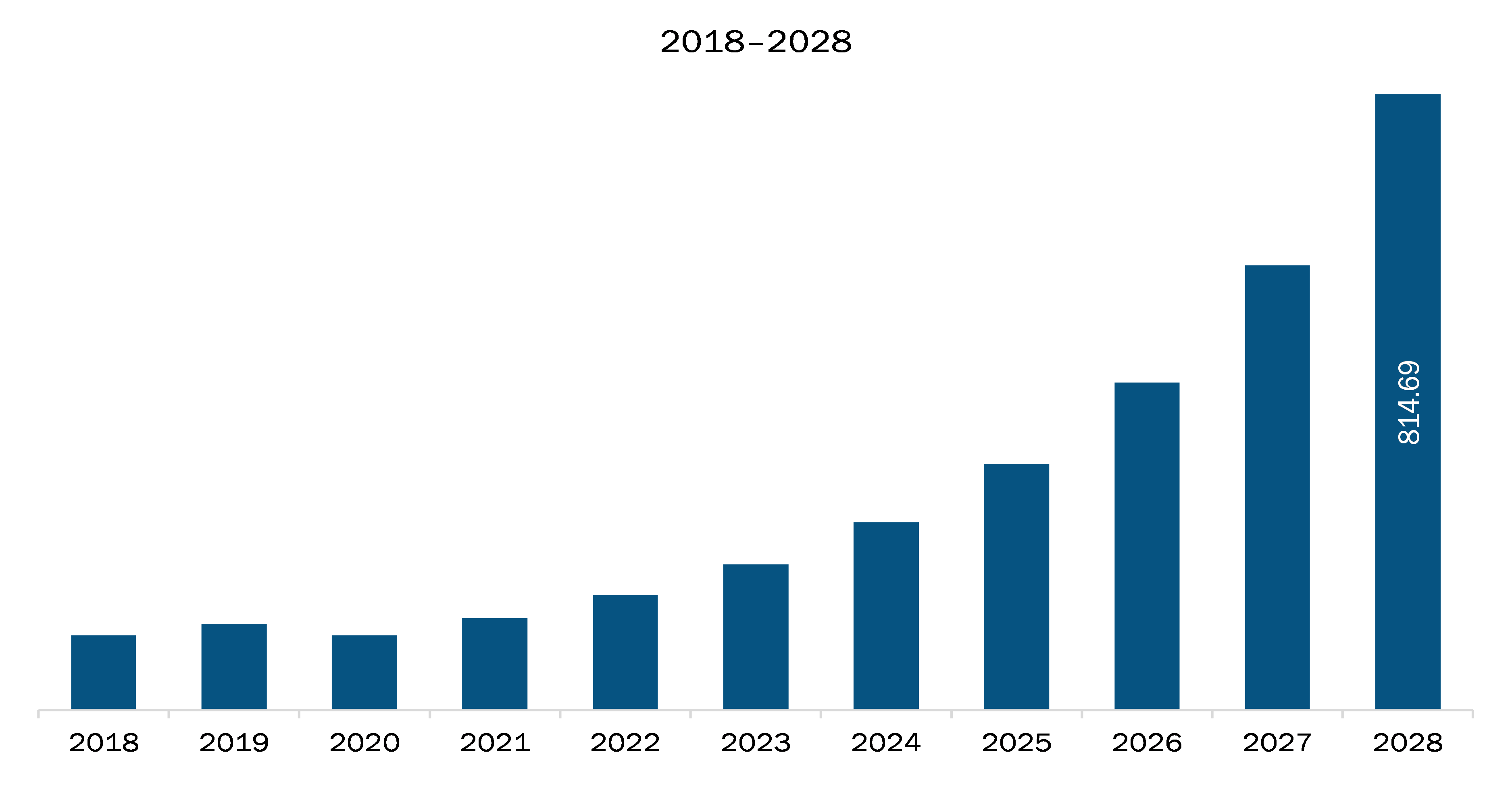The APAC connected gym equipment market is expected to grow from US$ 121.78 million in 2021 to US$ 814.69 million by 2028; it is estimated to grow at a CAGR of 31.2% from 2021 to 2028.
China, India, Japan, South Korea, and Australia are major economies in APAC. Mounting demand for residential connected gym equipment is expected to surge the APAC connected gym equipment market. Considering not only the pandemic of COVID-19, otherwise also, people have got different timing schedules according to their professions. General timings in gyms and health club may not be suitable for very customer. Also, the user’s timing and trainer’s timing should match for the workout session. There lies a great opportunity in designing and manufacturing affordable connected gym equipment for residential use as users are inclining towards privacy and convenience. Demand for smart fitness equipment is increasing across APAC region. Also, disposable house-hold incoming is increasing noticeably in many developing countries in APAC region. Considering buying capacity and space available at home, manufacturers have also got an opportunity for customization of smart equipment and machines. Doing this will significantly increase the demand for mid-price segment connect gym equipment. With the use of advanced technology, various new smart fitness equipment can be introduced which provides treatment for various diseases and disorder other than cardiovascular training and strength training. Doctors, physicians, and tech-experts can work together for developing such products. With research and development, companies can identify new needs and wants of the customers, which will create a significant opportunity for launching new products that will cater to several different applications, thereby driving the APAC market in coming years.
In case of COVID-19, APAC is highly affected specially India. APAC is a region which comprises of many developing nations. This region is characterized by big industrial presence, great economic opportunities, and high population. All the mentioned factors make APAC a major region for the growth of various markets including connected gym equipment. The temporary shutdown of various manufacturing units and factories in many countries of this region is impacting the supply chains and negatively impacting the production, delivery schedules and sales of various products as well services. Most of the Asian countries are developing countries and hence the presence of connected gym equipment is majorly found in commercial applications like health clubs, gyms, and hotels only. Since these all places are either temporarily closed or operating with various restriction and limitations, a severe impact is observed on the procurement and production of connected gym equipment. Since disposable income in these countries is not that high, majority of population cannot easily afford residential connected gym equipment for exercise and physical activities. Additionally, the region is a global manufacturing hub with countries like Japan, China, India, and South Korea, which all lead the global manufacturing industry growth. Since last year, a negative impact has been observed in growth of the connected gym equipment market.
With the new features and technologies, vendors can attract new customers and expand their footprints in emerging markets. This factor is likely to drive the APAC connected gym equipment market. The APAC connected gym equipment market is expected to grow at a good CAGR during the forecast period.

- This FREE sample will include data analysis, ranging from market trends to estimates and forecasts.
APAC Connected Gym Equipment Market Segmentation
APAC Connected Gym Equipment Market – By Type
- Cardiovascular Training
- Strength Training
APAC Connected Gym Equipment Market – By End-Users
- Residential
- Gym
- Other Commercial Users
APAC Connected Gym Equipment Market, by Country
- Australia
- China
- India
- Japan
- South Korea
- Rest of APAC
APAC Connected Gym Equipment Market -Companies Mentioned
- Cybex International, Inc.
- Johnson Health Tech
- LES MILLS INTERNATIONAL LTD
- Life Fitness
- Nautilus, Inc.
- Technogym S.p.A
Asia-Pacific Connected Gym Equipment Report Scope
| Report Attribute | Details |
|---|---|
| Market size in 2021 | US$ 121.78 Million |
| Market Size by 2028 | US$ 814.69 Million |
| CAGR (2021 - 2028) | 31.2% |
| Historical Data | 2019-2020 |
| Forecast period | 2022-2028 |
| Segments Covered |
By Type
|
| Regions and Countries Covered |
Asia-Pacific
|
| Market leaders and key company profiles |
|
- Historical Analysis (2 Years), Base Year, Forecast (7 Years) with CAGR
- PEST and SWOT Analysis
- Market Size Value / Volume - Regional, Country
- Industry and Competitive Landscape
- Excel Dataset
Recent Reports
Testimonials
Reason to Buy
- Informed Decision-Making
- Understanding Market Dynamics
- Competitive Analysis
- Identifying Emerging Markets
- Customer Insights
- Market Forecasts
- Risk Mitigation
- Boosting Operational Efficiency
- Strategic Planning
- Investment Justification
- Tracking Industry Innovations
- Aligning with Regulatory Trends





















 Get Free Sample For
Get Free Sample For